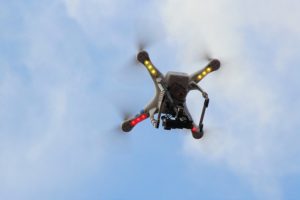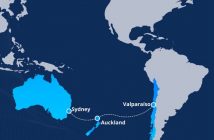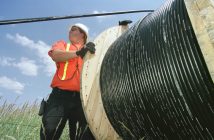The University of Canterbury’s (UC) Spatial Engineering Research Centre (SERC) is helping lead the way in the development of drones for industry, thanks to a new test range for unmanned aerial vehicles (UAVs).
SERC made its first flight in July over some 100 square kilometres of airspace on the south-west side of Banks Peninsula it was granted by the Civil Aviation Authority (CAA) for use as a segregated UAV test range.
SERC senior research engineer Kelvin Barnsdale says the need for this test range was driven by the development of ‘beyond line of sight’ drone technology and subsequent regulatory issues.
“Drones have moved from a toy to an industry tool and are becoming much more capable of flying themselves,” he explains. “To regulate this, we have been working with the CAA to develop new rules for operating drones, which came into effect in August 2015.”
However, one of the enduring limitations of the new rules requires drones to be used within line of sight of the pilot. “The CAA doesn’t call these unmanned aerial vehicles – they treat them as remotely piloted, which is a significant difference,” Barnsdale says. “So to test new airborne technology that goes beyond line of sight, we needed a segregated test range.”
The test range is a block of restricted airspace that, when activated, legally excludes any other aircraft in that area. Crucially this allows SERC to fly drones above the regulation 400 feet and beyond line of sight under special conditions.
Barnsdale says this enables researchers and industry partners, in New Zealand and abroad, to test and verify UAV technology at high altitudes in a safe environment – the only restricted airspace in New Zealand for this purpose.
“We are currently working with New Zealand industry and exploring partnerships with organisations in Australia, the US and Europe due to their specialisation in beyond line of sight technology.”
This covers a range of uses, from structure inspections and agricultural intelligence-gathering, to marine biology surveys and the development of search and rescue drones in a marine environment. “We are also currently using the test range for instrument trials, working towards the use of drones for high altitude atmospheric research over the Southern Ocean and Antarctica.”
Aeronavics technology development manager Edwin Hayes says opportunities for testing new technologies are critical for developers of high-end UAV solutions. “Challenging operations such as flights ‘Beyond Line of Sight’ can only be fully tested with access to segregated airspace,” he notes.
Aeronavics expects to use the test site for investigating a wide range of UAV applications, including in the important precision agriculture sector, as it continues to collaborate with UC.
“Since the number of locations worldwide suitable for such testing is limited, the site provides the New Zealand UAV industry a competitive advantage, as well as making the university a great place to base UAV research.”
The first official flight was made by a New Zealand-made Aeronavics NAVI to a height of 1000 feet above ground. The flight, including the landing, was fully automated and monitored by a chase drone at lower levels.





